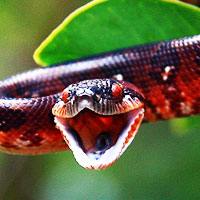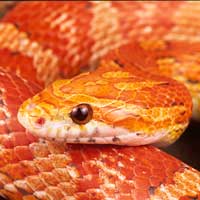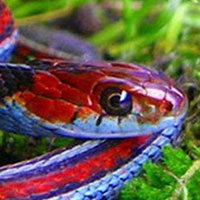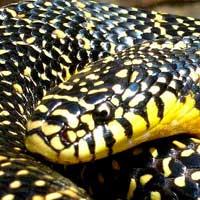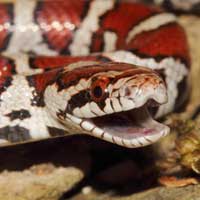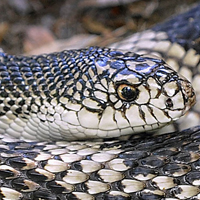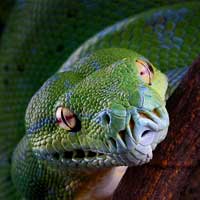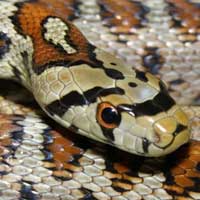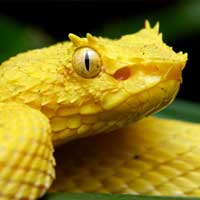Discover the Fascinating World of Baird's Rat Snake
Baird's Rat Snake, scientifically known as Pantherophis bairdi, belongs to the Colubridae family, which is the largest family of snakes, encompassing a variety of non-venomous and mildly venomous species recognized for their adaptability and wide geographic distribution.
Scientific Name: Pantherophis bairdi
Snake Family: Colubridae
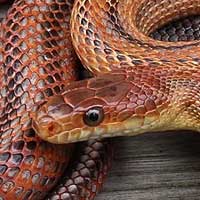
Introduction to Baird's Rat Snake
Baird's Rat Snake (*Pantherophis bairdi*) is a striking non-venomous species native to the southwestern United States and northern Mexico. Known for its vibrant orange and gray coloration, this snake is a favorite among reptile enthusiasts. Easy to care for and adaptable, Baird's Rat Snake is a perfect choice for both novice and experienced keepers.
Creating the Perfect Habitat for Baird's Rat Snake
To ensure Baird's Rat Snake thrives in captivity, replicating its natural environment is essential. These snakes are native to rocky terrains, grasslands, and forests. Key habitat requirements include:
- Enclosure Size: Adults require a minimum of a 40-gallon tank with ample space for movement.
- Temperature Gradient: Maintain daytime temperatures of 75-85°F with a basking spot at 90°F, and nighttime temperatures around 65-75°F.
- Humidity: Keep humidity levels between 40-60% to replicate their natural environment.
- Substrate: Use aspen shavings, coconut fiber, or cypress mulch for easy cleaning and burrowing opportunities.
- Enrichment: Include branches, rocks, and hides to encourage climbing and exploration.
Refer to the table below for a quick habitat reference:
| Habitat Element | Specification |
|---|---|
| Enclosure Size | 40+ gallons |
| Temperature | 75-85°F (day), 65-75°F (night) |
| Humidity | 40-60% |
| Substrate | Aspen shavings, coconut fiber, cypress mulch |
Diet and Feeding Guidelines for Baird's Rat Snake
Feeding Baird's Rat Snake is straightforward as they are carnivorous and thrive on a diet of rodents. Follow these guidelines for proper feeding:
- Juveniles: Feed pinky mice every 5-7 days.
- Subadults: Feed small to medium mice every 7-10 days.
- Adults: Offer large mice or small rats every 10-14 days.
- Prey Preparation: Use pre-killed prey to prevent injuries.
- Hydration: Always provide fresh water in a shallow dish for drinking and soaking.
A consistent feeding schedule promotes optimal health and supports growth.
Behavior and Temperament of Baird's Rat Snake
Baird's Rat Snake is known for its calm and inquisitive nature, making it a popular choice among reptile keepers. Key behavioral traits include:
- Diurnal Activity: These snakes are active during the day, often exploring their enclosure.
- Climbing Enthusiasts: They enjoy climbing, so vertical space and branches are crucial.
- Docile Temperament: Regular handling helps them remain calm and comfortable with human interaction.
- Defensive Behavior: When threatened, they may vibrate their tail or adopt a defensive posture, but they rarely bite.
Understanding their behavior will help foster a positive relationship and ensure their well-being.
Health and Lifespan of Baird's Rat Snake
With proper care, Baird's Rat Snake can live up to 20 years in captivity. Ensuring their health involves attention to the following:
- Common Health Issues: Look out for respiratory infections, mites, and shedding problems.
- Preventative Measures: Maintain clean and stable enclosure conditions, including temperature and humidity levels.
- Veterinary Care: Schedule regular check-ups with an exotic animal veterinarian to address potential issues early.
Consistent monitoring and care ensure your snake remains healthy and active throughout its life.
Reproduction and Breeding of Baird's Rat Snake
Breeding Baird's Rat Snake requires replicating their natural seasonal cycles. Key aspects of their reproduction include:
- Breeding Season: Typically occurs in spring after a winter brumation period.
- Clutch Size: Females lay 6-10 eggs per clutch.
- Incubation: Eggs should be incubated at 80-85°F for 50-60 days.
- Hatchlings: Provide appropriately sized enclosures and prey for juvenile snakes.
Breeding these snakes can be rewarding with proper preparation and care.
Handling and Care Tips for Baird's Rat Snake
Proper handling and care are essential to ensuring a healthy and stress-free life for your Baird's Rat Snake. Here are some best practices:
- Handle the snake gently and support its body fully.
- Avoid handling immediately after feeding to prevent regurgitation.
- Maintain a clean and secure enclosure to minimize stress and health risks.
- Provide enrichment, such as climbing structures and varied layouts, to stimulate natural behaviors.
- Monitor their behavior for signs of stress or illness, such as excessive hiding or lack of appetite.
By following these tips, you can build a positive relationship with your snake and ensure its long-term well-being.
